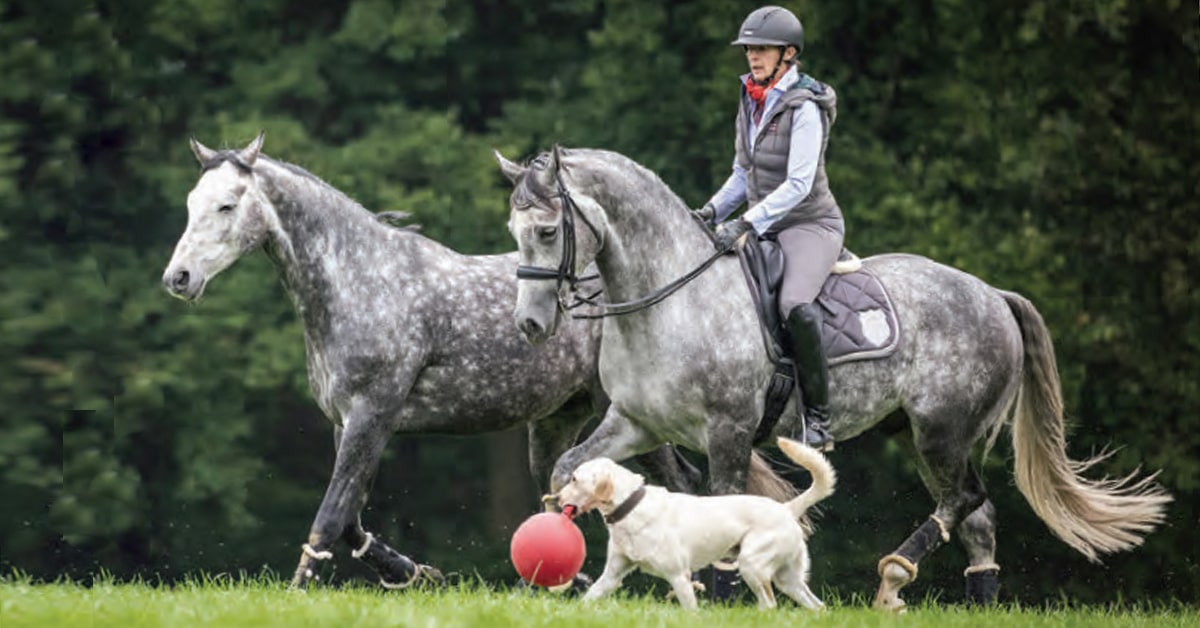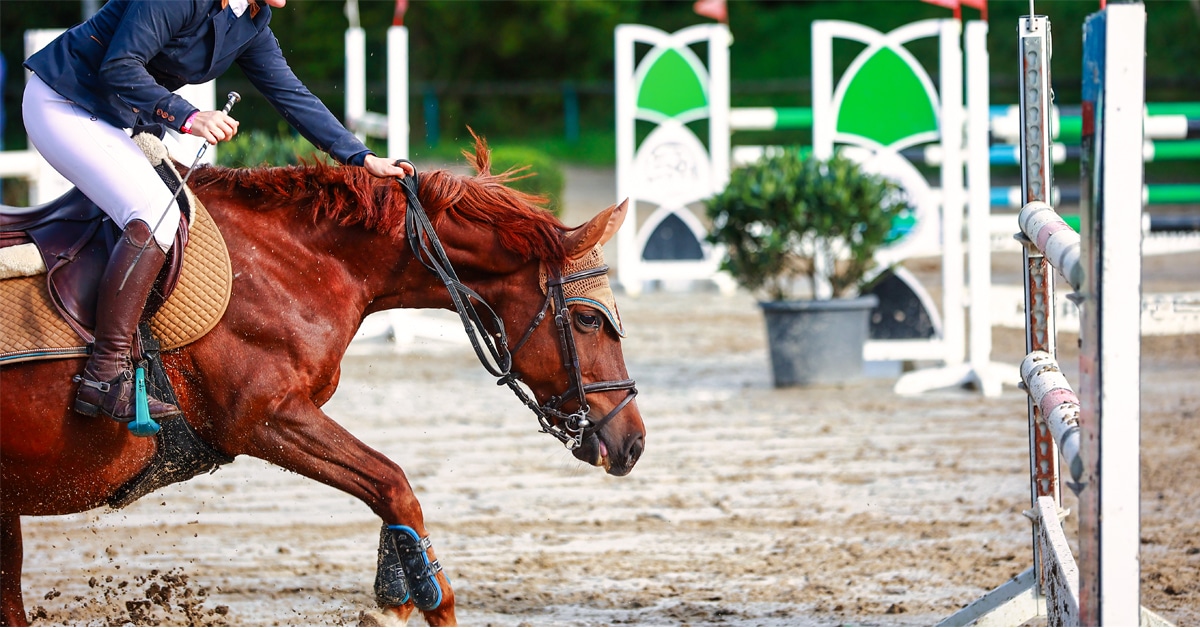Leasing a horse gives you an opportunity to enjoy all the pleasures of riding without the responsibility of ownership. It can allow a talented rider to show a horse which he or she couldn’t otherwise afford. This is especially useful for an adolescent rider that will quickly outgrow a show horse in scope and size.
Leasing arrangements permit a horse owner that loves his horse, but can’t afford to keep it – or hasn’t the time to ride it – to lend it to a rider that can maintain it while the owner still has control. You may share the board of a horse with a friend in exchange for its use, or you may simply be renting a horse for a trail ride. Leasing arrangements are as varied as the people who make them. In all of these situations, the relationship that is created is called a bailment.
A bailment can be defined as the placing of personal property (in this case a horse) in the care, custody and safe-keeping of another person on condition that the property is returned to the owner as soon as the purposes for which the property was lent have been fulfilled. Most leasing situations involving horses would constitute a bailment, as they involve the transfer of possession of the horse to another party with the horse owner retaining the title on the understanding that the horse will be returned to the owner as agreed pursuant to the lease. The owner is considered a bailor and the person to whom the horse is lent is considered a bailee.
Responsibility of Owner to Bailee
In general, the owner of a horse who is leasing the horse to another has a duty to ensure that the horse is reasonably fit to perform the work for which it was leased. As such, an owner that provides horses for trail rides must take reasonable care to ensure the horses are gentle and suitable as riding horses. An owner lending out a horse for riding and show jumping must furnish a horse suitable for this purpose.
Court cases involving horse leasing date far back. In an old English case, Fowler v. Lock (1872), L.R. 7 C.P. 272, a horse was leased for the use of pulling a cab in London. Unfortunately, the horse was not harness trained and being fresh from the country, it became frightened in the city and overturned the cab, injuring the driver. The owner of the horse was found responsible for the resulting damages because he supplied a horse that was not fit for the purpose for which it was lent.
In a more recent Canadian case, Collins v. Richmond Rodeo Riding Ltd. (1966), 56 D.L.R. (2d) 428, a girl mounted a rented horse that broke into a canter while leaving the stable and the girl fell off. The owner of the horse was considered liable for not determining the extent of the girl’s riding experience, or lack thereof, and then for selecting the wrong mount for her level of experience and not ensuring appropriate supervision. The girl was found contributorily liable for not realizing the horse was not suitable for her, as the horse had apparently acted up when she was mounting it.
It should be noted that the horse owner that lets out his or her horse is not liable for a rider’s injuries just because the rider fell off – with or without the horse’s assistance. The owner is not an insurer against accident, but is only under an obligation to furnish an animal that is reasonably fit for the purpose intended. This was clear in Koser v. Hornback, 75 Idaho 24, where the court held as follows: “One who lets a horse for hire, although not an insurer of the horse’s fitness, is under an obligation, sometimes spoken of as an implied warranty, to furnish an animal which is reasonably safe for the purpose known to be intended, and for a failure to use due care to discover dangerous propensities in such animals, or to disclose them to the hirer, he may be held liable for personal injuries or death resulting from such neglect.”
Obligations of the Bailee
Where the horse is hired or rented, the bailee (lessee) must exercise ordinary or reasonable care in the use of the horse. If the horse is injured while in the bailee’s care, the onus is on the bailee to show that the injury was not the fault of the bailee to take reasonable care of the horse.
The standard of care may vary depending on the lease situation. The courts typically determine the appropriate standard of care by first determining for whose benefit the bailment was made – as not all bailments are created equal! For instance, a farmer boarding a friend’s horse for free, for the simple purpose of looking after it with his other horses, will likely be held to a lower standard of care than a rider who is given a horse to ride for free by a friend. In the case of the farmer, the bailment is not for his benefit. In the case of the rider, the bailment is for her benefit. Where a horse is loaned to a person (bailee) without charge and entirely for the bailee’s benefit, that person must exercise extraordinary, or the highest degree, of care with respect to the horse.
In Schlamonitz v. Pinehurst, 351 F. (2d) 509, the owner of two racehorses employed a trainer to train and exercise the horses during the racing season. The horses were stabled in a barn that caught fire one night in January and they died. The owner sued the trainer and the owner of the barn for the loss of the horses. Although the court found that there were actions the defendants could have taken that may have averted the loss – such as the posting of overnight grooms, chemical extinguishers, and an automatic fire alarm system – the duty owed by the defendants was that of ordinary and not extraordinary care. The court refused to hold the trainer negligent just because he failed to take extra precautions in the case of fire that would no doubt prove expensive, and were somewhat unusual in these situations.
The purpose of the hiring and any limitations put on it are also important in determining the standard of care a bailee must exercise. A Cambridge undergraduate rented a horse to ride along the road. He was expressly told not to jump, but despite this stipulation, attempted to jump the horse over a fence where it was impaled on a stick and killed. Even though the boy was still a minor, he was held liable of negligence in the death of the horse.
If a horse is injured or becomes ill while in the care of a bailee, it is incumbent on the bailee to call in the veterinarian, if necessary, and failure to do so could result in liability. In another old case, Dean v. Keate (1811), 3 Camp. 4, a person leasing a horse tried a home remedy and gave the horse a dose of opium and ginger to perk it up. The horse died. The court said: “Had he called in a farrier [the person commonly in charge of dispensing medications in those days] he would not have been answerable for the medicines the latter might have administered; but when he prescribes himself, he assumes a new degree of responsibility; and prescribing so improperly, I think he did not exercise that degree of care which might be expected from a prudent man towards his own horse; and was, in consequence, guilty of a breach of the implied undertaking he entered into when he hired the horse from the plaintiff.”
Other Considerations – Get it in Writing
Apart from the duties that a bailor and bailee of a horse undertake when the horse is leased, other issues are important, such as the rent for the horse and the ability to get the horse back at the end of the rental term. We often hear from owners of horses that claim that their lessees have either sold their horse or claim it as their own when contacted by the owner. Clearly, the two parties are not getting the same message when they make original arrangements about the horse. Also, if a horse owner does not make regular contact with a lessee, especially a lessee who is simply paying the horse’s expenses in exchange for use, after a couple of years of paying the horse’s bills the lessee may start to assume ownership of the horse – at least in his or her own mind.
Protect yourself by having a clear and well-written leasing agreement. While a lawyer with equine experience is your best bet, you can do it yourself. Important pieces of information and terms to include are:
a) The full names and contact information of the parties;
b) A description of the horse, including as many details about the horse as can be found, including any official registration numbers;
c) The purpose of the lease and use of the horse;
d) Payment details including lease fees, board, veterinary expenses, farrier, etc.;
e) The term of the lease (i.e. how long it will last);
f) Risk of loss – who is responsible if the horse or a person is injured;
g) Location of the horse;
h) Instructions specific to the use of the horse including riders, trainers, turnout, special instructions;
i) Insurance; and
j) Termination of the agreement in situations of unsoundness, default in payment, etc.
Keep in mind that these are just a few of the many terms you may wish to include in a lease agreement. Ultimately, each agreement will differ depending on the unique situation of the parties and horse involved.
Whether you are the lessor or lessee, a horse lease can be a pleasant and fulfilling arrangement. All that is required is a little foresight and a written agreement … and a horse, of course.
The Latest









